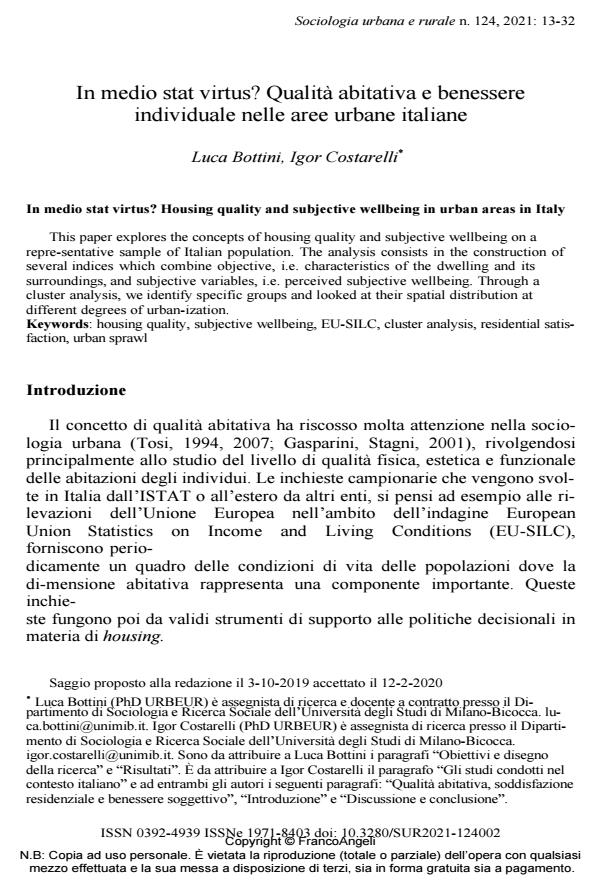In medio stat virtus? Housing quality and subjective wellbeing in urban areas in Italy
Journal title SOCIOLOGIA URBANA E RURALE
Author/s Luca Bottini, Igor Costarelli
Publishing Year 2021 Issue 2021/124
Language Italian Pages 20 P. 13-32 File size 277 KB
DOI 10.3280/SUR2021-124002
DOI is like a bar code for intellectual property: to have more infomation
click here
Below, you can see the article first page
If you want to buy this article in PDF format, you can do it, following the instructions to buy download credits

FrancoAngeli is member of Publishers International Linking Association, Inc (PILA), a not-for-profit association which run the CrossRef service enabling links to and from online scholarly content.
This paper explores the concepts of housing quality and subjective wellbeing on a repre-sentative sample of Italian population. The analysis consists in the construction of several indi-ces which combine objective, i.e. characteristics of the dwelling and its surroundings, and sub-jective variables, i.e. perceived subjective wellbeing. Through a cluster analysis, we identify specific groups and looked at their spatial distribution at different degrees of urbanization.
Keywords: Housing quality, subjective wellbeing, EU-SILC, cluster analysis, residential satis-faction, urban sprawl
Luca Bottini, Igor Costarelli, In medio stat virtus? Qualità abitativa e benessere individuale nelle aree urbane italiane in "SOCIOLOGIA URBANA E RURALE" 124/2021, pp 13-32, DOI: 10.3280/SUR2021-124002